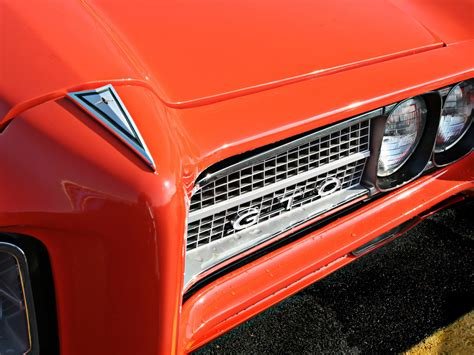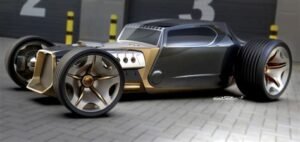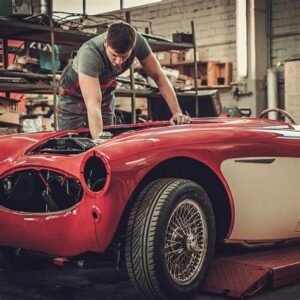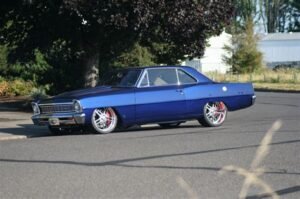
Restoration of a classic car is often a labor of love in which so many different facets, both interior and exterior, are replaced with new components. Aftermarkets range from minor, subtle improvements all the way to complete overhauls. It can be more than a little overwhelming to navigate such a massive landscape. With the right aftermarket parts, your classic can get that new lease on life with improved performance, reliability, and style. While the right choices may afford a host of welcome improvements, the wrong ones can lead to incompatibility, reduced value, or even safety concerns. This guide is going to help you with information and insights on informed decisions while choosing aftermarket parts for your classic car.
Understanding Your Needs
The first thing to decide when sourcing replacement parts is precisely what you want from your classic car. What are you trying to achieve? Are you trying to restore the car to its original specifications, enhance its performance, or achieve a compromise between the two? Consider budget, time commitment, and intended use of the vehicle.
Restoring to Original Specifications
If you want to make your classic car look like it just came off the assembly line, then you’re searching for parts that are factory-correct. This may be highly important if your aim is to be somewhat historical with your vehicle, as preserving authenticity will many times retain the value within the car.
Sources of Original Parts
Original Equipment Manufacturers: Although a few OEMs still produce spare parts for older models, availability is limited. Contact the manufacturer directly or check the resources online.
Classic car parts specialists: Most of the companies specialize in certain specific classic car model parts. These retailers usually have big catalogs and expertise that will guide you to the right parts.
Online auctions and classifieds: Websites such as eBay or Craigslist can prove to be a treasure for original parts. Always be cautious when purchasing secondhand parts, taking into consideration their condition and authenticity.
Enhancement of performance
If you want to improve the performance of your classic, then the choice for engine upgrades to suspension modifications is virtually endless.
Performance Engine
High-Flow Air Filters: Provide increased airflow into the engine, improving power and throttle response.
Performance Exhaust Systems: Decrease back pressure by allowing a smoother flow through the exhaust system and may improve power.
Cam Shafts: Improve valve timing to optimize performance, but changes the characteristic of the engine.
Suspension
Lowering Springs: Lower ride height for a sportier look and handling.
Adjustable Shocks: Fine-tune damping for improved ride comfort and handling.
Performance Tires: Better grip, cornering ability, and overall handling.
Aesthetic Upgrades
With so many after-market parts available, your classic can receive an enhanced visual appearance, too. From wheels and tires to interior accessories, the options are endless.
Exterior Upgrades
Wheels and Tires: Upgrade to larger or more stylish wheels for dramatic visual change.
Body Kits: Add spoilers, side skirts, and other aero elements for that sporty look.
Lighting Upgrade: Headlights, taillights, and turn signals can be completely replaced with modern, high-visibility LED units that improve appearance just as much as visibility.
Interior Upgrades
Seating: Replace the seats with more comfortable or stylish ones to give it that personal touch.
Gauges and Dashboards: Outdated gauges are replaced with modern, useful replacements.
Stereo and Audio Systems: The old audio systems featuring no Bluetooth or poor quality speakers are replaced with a modern one.
Choosing the Right Parts
Once your goals have been ascertained, it is time to narrow down your options and choose the right parts.
Compatibility and Fitment
You must take into consideration whether the parts fit your model classic car. Unsuitable fitment may give rise to a problematic installation process in several cases, inflict damage on your car, or even create safety hazards. Always verify the specifications of the part and confirm with the manufacturer or a reputable retailer of classic car parts.
Quality and Durability
Invest in top-quality aftermarket parts that are made to last. While cheap parts may seem attractive, such parts will only result in early failure and additional repair costs. Ensure the parts are of durable material and backed by a pretty decent warranty.
Reviews and Testimonials
Read reviews and testimonials from other classic car owners who have used the parts you are considering. Their experiences can provide a great deal of insight into not only the quality and performance of the part but also how easy or difficult the installation will be.
Installation Considerations
Installation of an aftermarket part can run the gamut from quite simple to very complicated. If you aren’t confident in your mechanical skills, or if the installation is complicated, consider having the work done professionally.
DIY or Professional Installation
If you are comfortable working with cars and have the right tool access, then you may be in a position where you can install some parts yourself. However, complicated installations – engine modifications or suspension upgrades, for example – are better left to a professional mechanic.
Installation Guides and Resources
With many aftermarket parts manufacturers, installation guides and resources are often available; these may be a real boon for the independent DIY’er. Online forums and communities relating to your model of classic car can often offer some real treasure in terms of installation tips and advice.
Maintaining Your Classic
Of course, once your classic is fitted out with some aftermarket parts, you will need to keep it well-maintained to extend its life and performance.
Routine Maintenance
Do the recommended maintenance on your classic car, like oil changes, fluid checks, and car inspections. Be highly attentive to the new aftermarket parts, making sure they function the way they should and that no problems arise.
Specialized Maintenance
Some Aftermarket parts require special maintenance. For example, some performance-based muffler will need to be cleaned out periodically in order to avoid the buildup that might reduce its effectiveness. Look for recommendations in the part documentation for special maintenance requirements.
Conclusion
Because you want your classic car to maintain its prestige, picking the right sets of aftermarket parts is one of the most important steps in restoring or modifying your valuable possession. By knowing what you need and choosing compatible and durable parts with care, rest assured that your classic car will turn heads and make you happy for many years to come.




